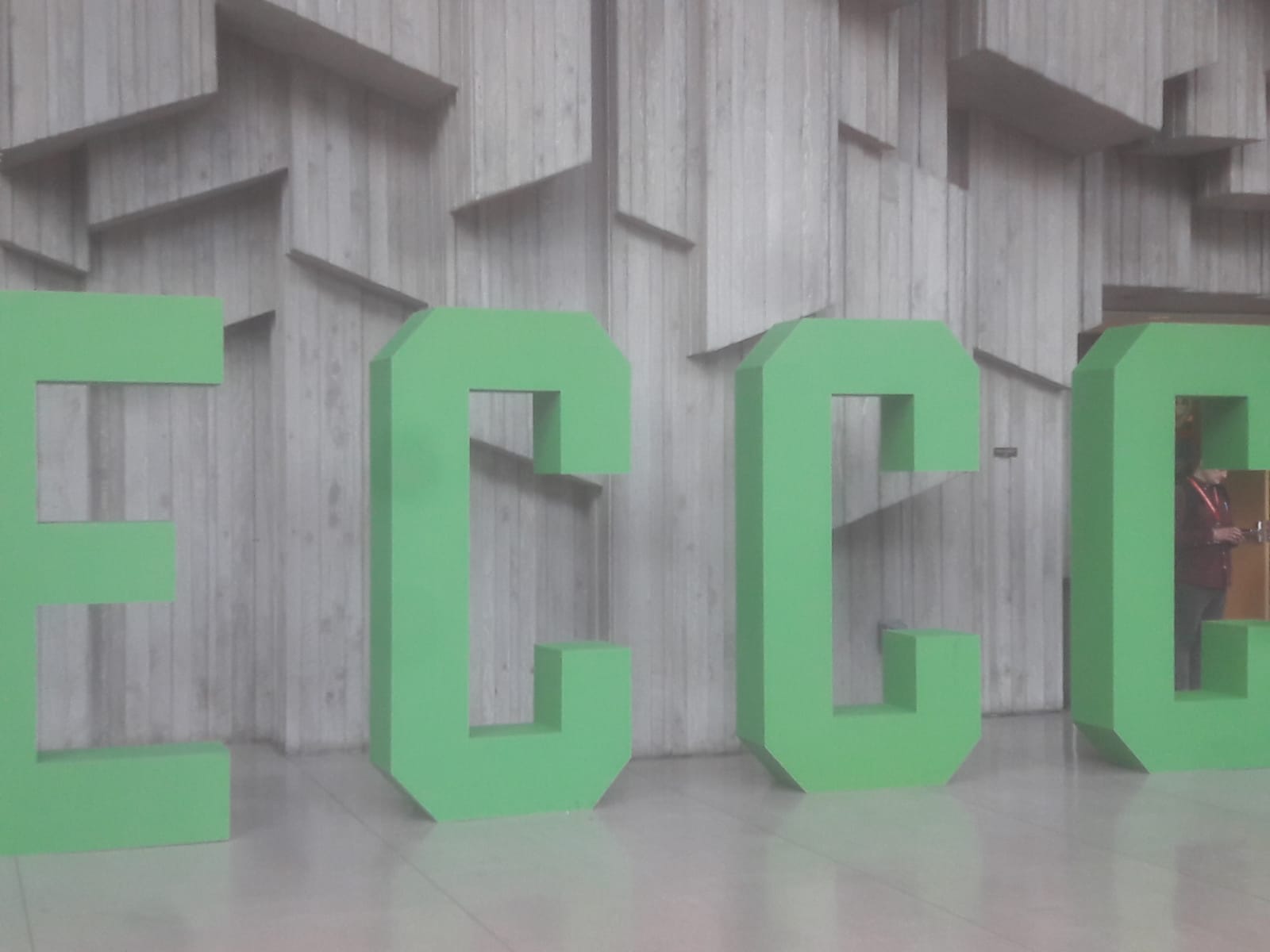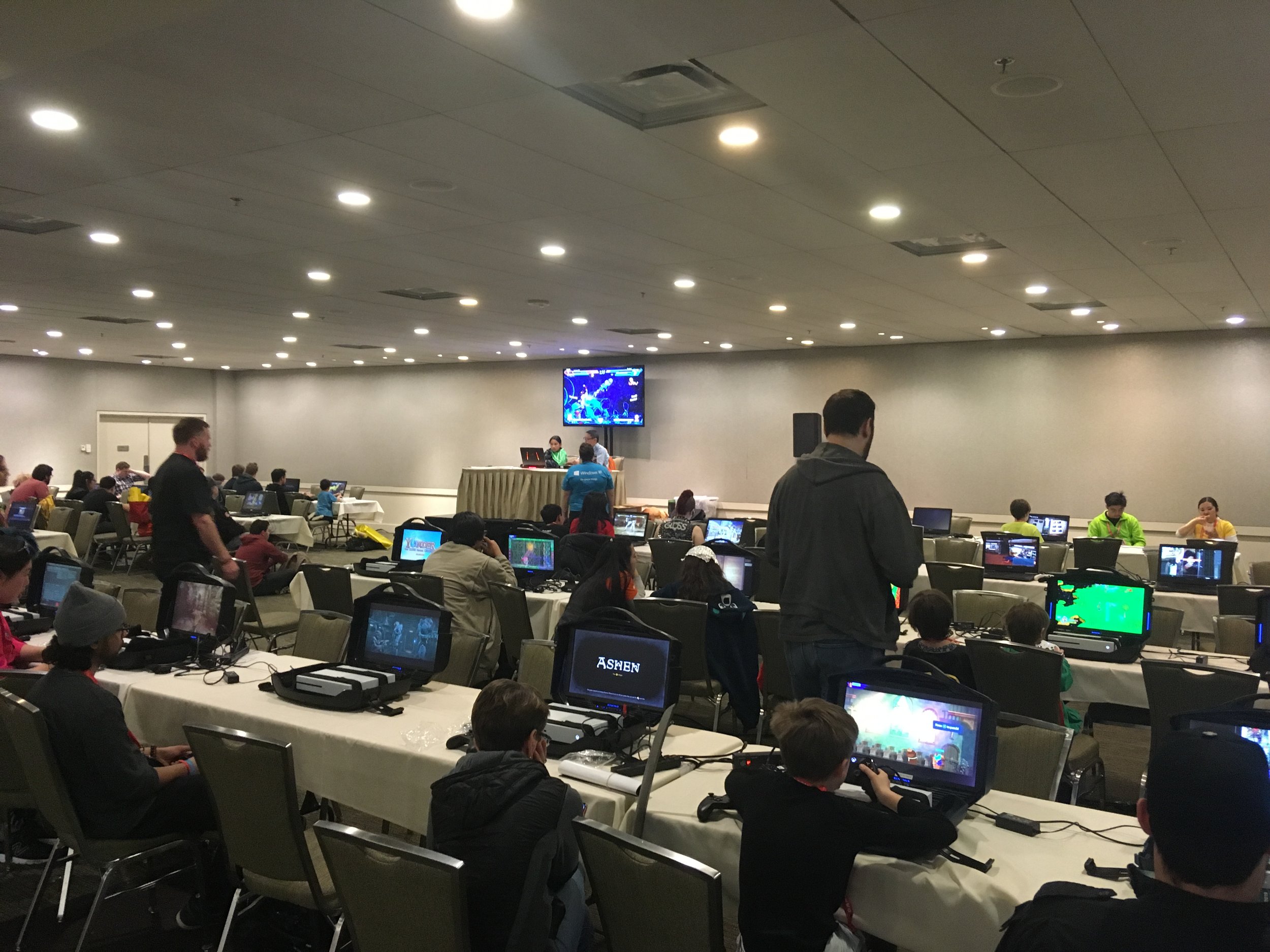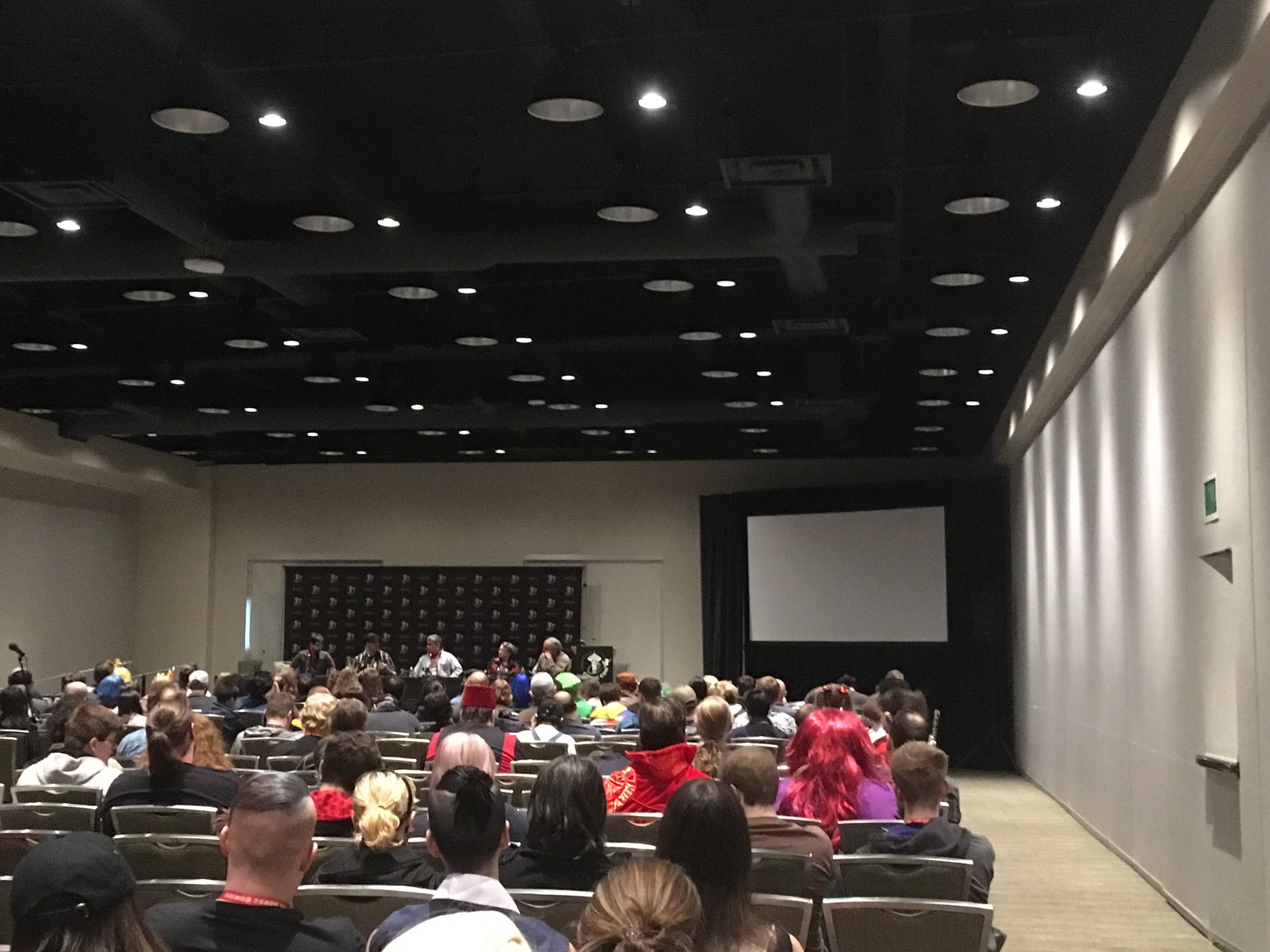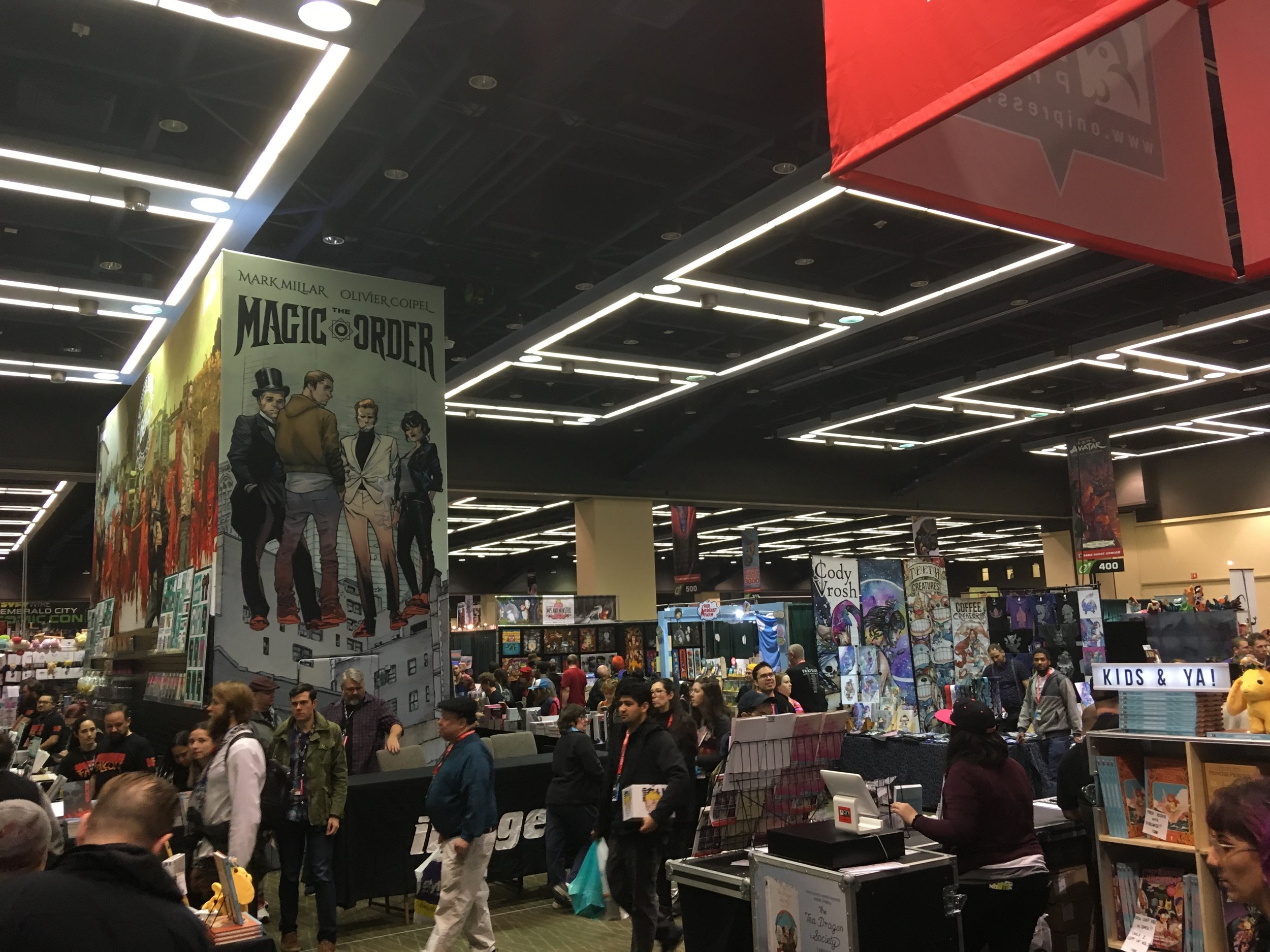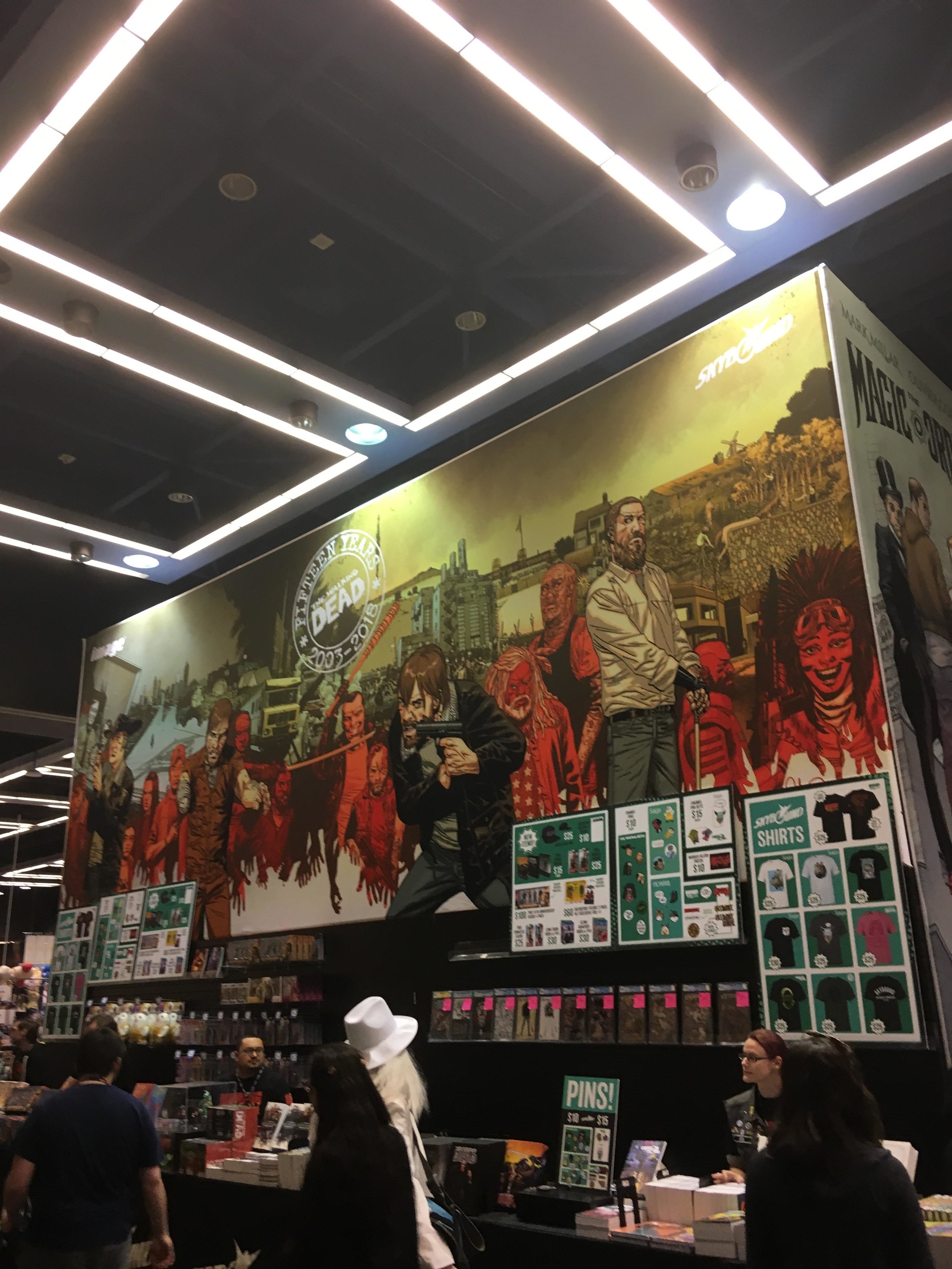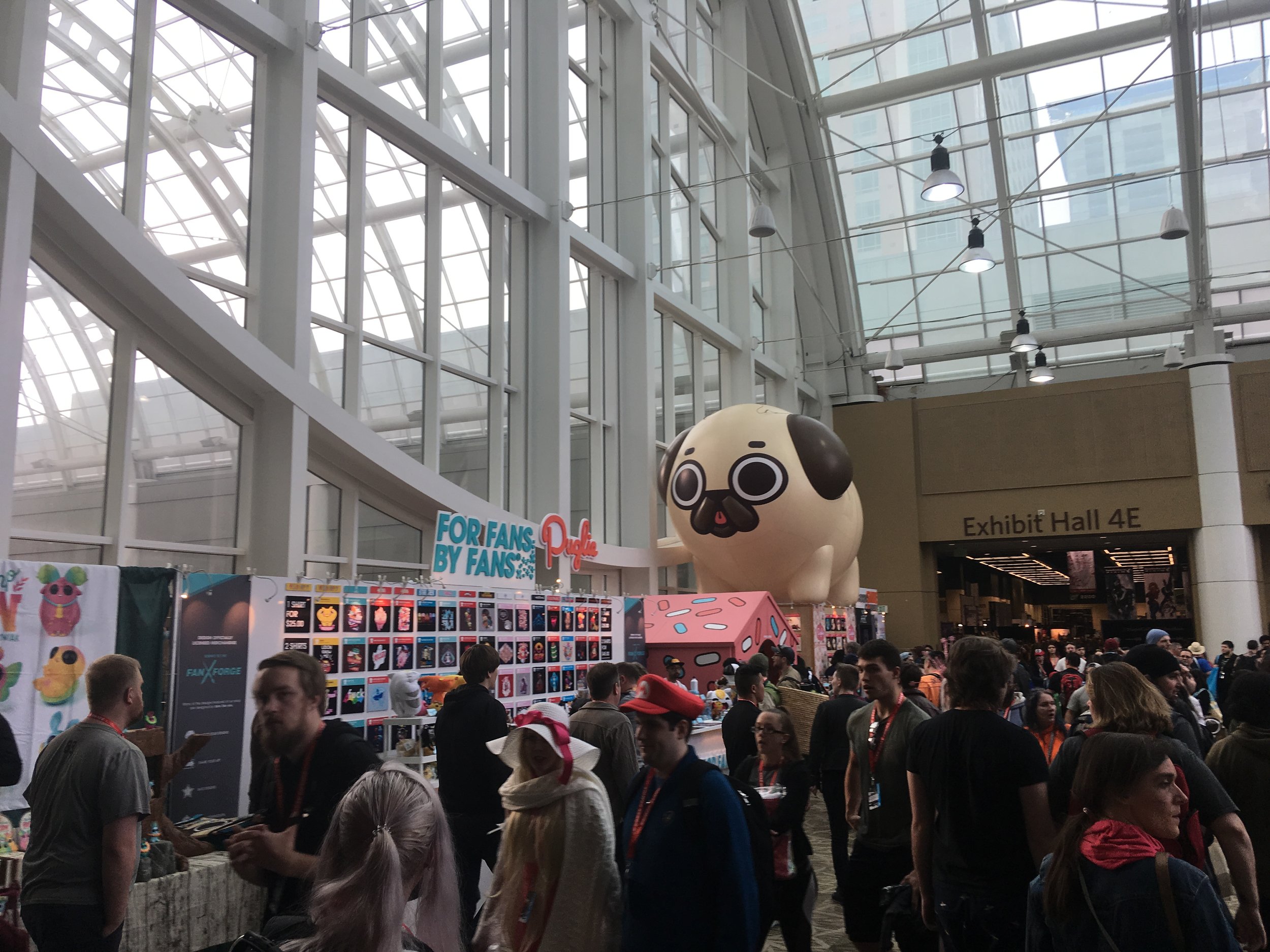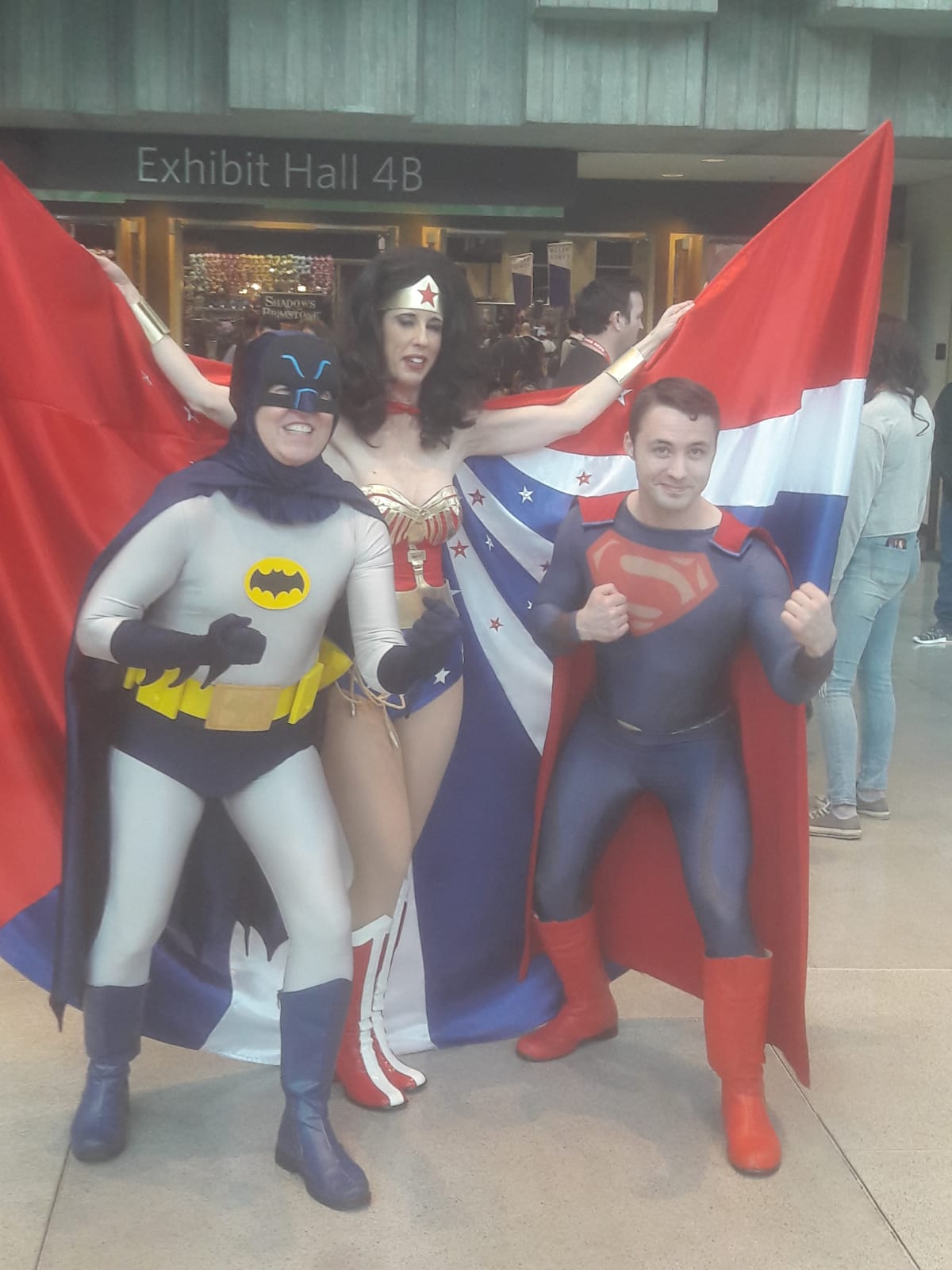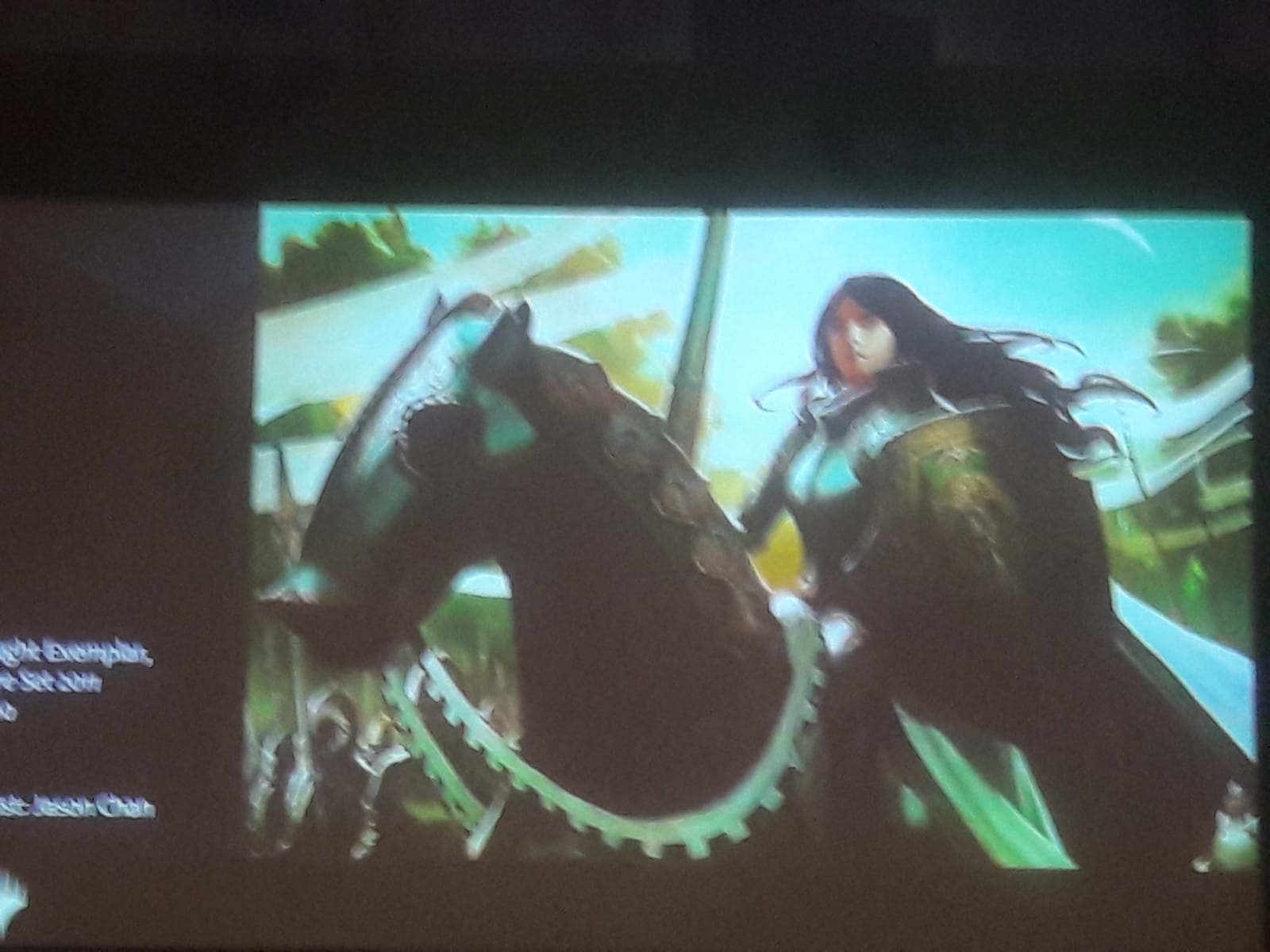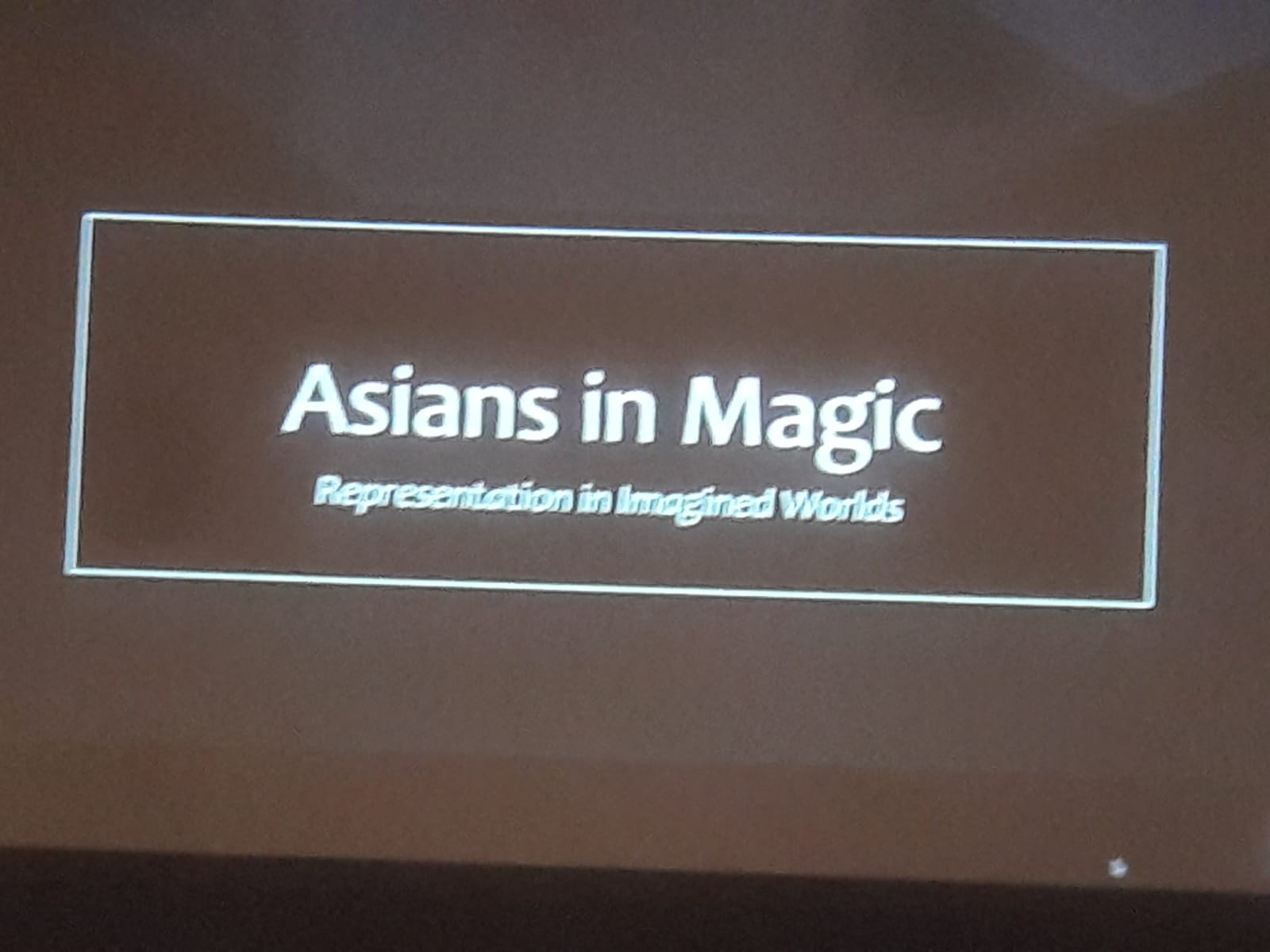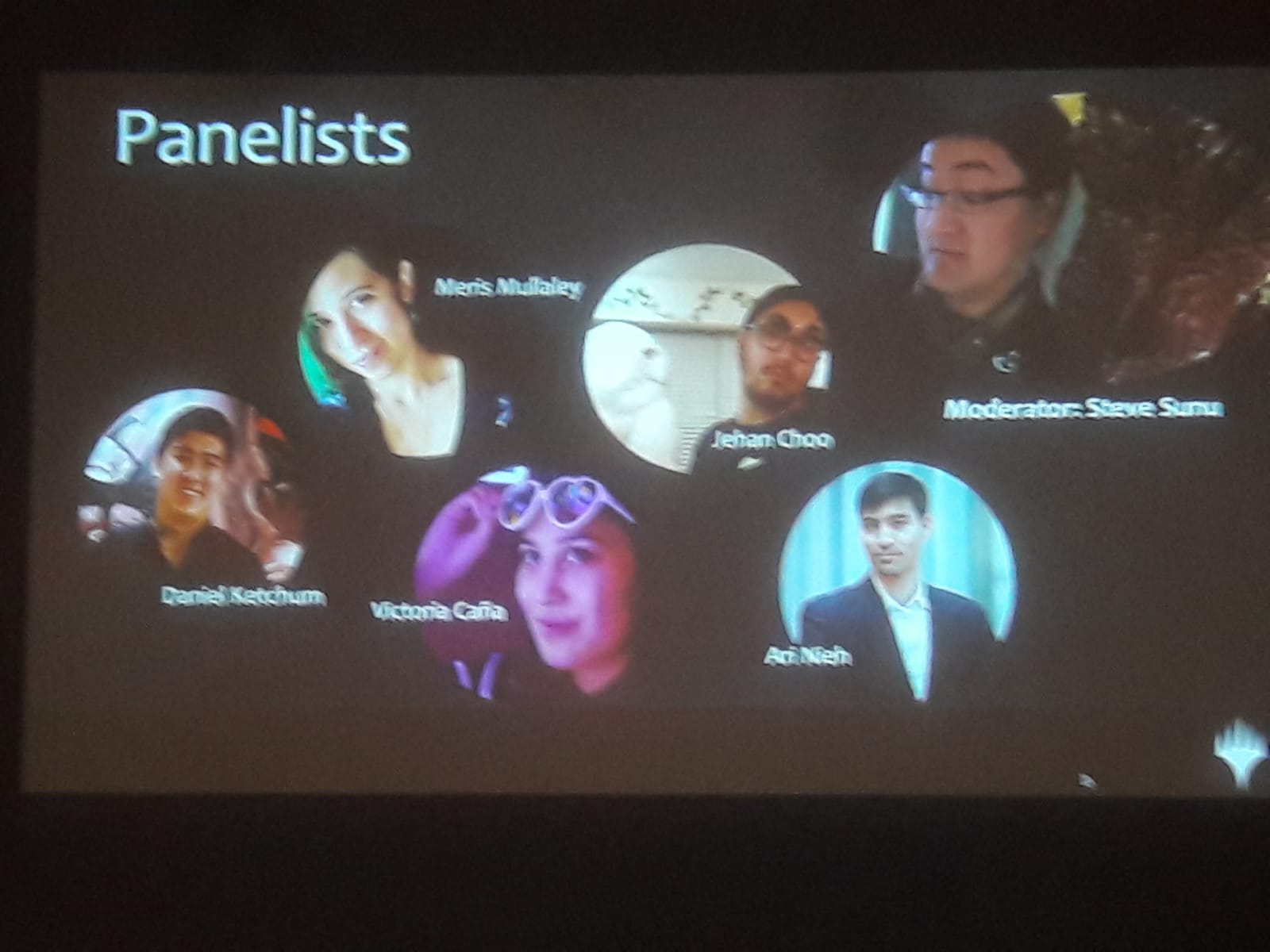Review: Emerald City Comic Con 2019
The Emerald City Comic Con attracts guests of upwards of 100,000 fans and 100s of celebrity guests from the worlds of fantasy, science-fiction, animation and gaming (Fig. 1). Now in its fifteenth year and still going strong, the three-day event held at the Washington State Convention Center, Seattle – of which we had the pleasure of attending just one day, Friday 15th March – is professional in every sense of the word, and worthy of every connotation it denotes. What the convention perhaps lacks in personality and quirk it makes up for in the sheer sophistication of its organisation. Its vast spectrum of panels and fan meetups, alongside its gaming centre and show floors, present a labyrinthine space where one gets lost amid the energies and intricacies of a thriving fan culture. Among Friday’s many highlights were impressive large-scale Q&As with science-fiction legend George Takei (Star Trek), the cast of American 3-D CGI animated television series Star Wars: Rebels (Simon Kinberg, Dave Filoni & Carrie Beck, 2014-2018), and Ian Somerhalder (The Vampire Diaries [Kevin Williamson & Julie Plec, 2009-2017]), all giving their behind-the-scenes insights into the construction and performance of science-fiction and horror onscreen. If ECCC is not necessarily the place to come to feel the intimate embrace of the like-minded community, it is the place that same community might learn how to structure its engagement with, appreciation for, and knowledge of, its favourite examples of fantasy and animation.
Outside the event’s main attractions, breakout panel discussions offered those attendees with perhaps more niche interests a space to indulge their passions and ask questions directly to performers, authors, writers, and other industry personnel. Two smaller panels included a number of numerations over the current worlds of fantasy offered up within mainstream popular culture. In a panel entitled “Making the Unbelievable Believable”, dark fantasy/horror writers Jay Boyce, Jonathan MacBerry, Scott O’Moore and Caitlin Starling reflected on the writing techniques involved in producing effective examples of these genres across a range of media platforms including novels, theatre, film, television, board games and digital social media like Instagram (Fig. 2). The panel delighted in the devilish, engaging fans in a self-consciously deadpan and nihilistic discourse, and the discussion considers the way in which the construction of horror was in many was an attempt to give voice to contemporary cultural anxieties in a way that resonated with the writings of horror theorists such as Julia Kristeva (1982). The second panel, entitled “Asians in Magic: Representation in Imagined Worlds”, saw game designers, artists, producers from an Asian-American heritage reflected on their experiences working at on the popular Magic: The Gathering role-playing card game series, and their efforts to improve, normalise and champion a greater ethnic and cultural diversity within the fantasy realms they construct. Their conversation reflected not only for a need for Magic: The Gathering to represent multiculturalism in its series, but to be multicultural in its behind-the-scenes structure too, allowing its creators to offer different fantasies of identity for its gamers to consider.
A highlight for fantasy fans included a spotlight interview with author and genre pioneer Terry Brooks (Fig. 3), who has sold over 50 million copies of his decade-spanding fantasy series based in the world of Shannara. An early adopter of the style of high fantasy popularised by J.R.R. Tolkien, Brooks played a key role in the explosion of genre fantasy fiction in the late 1960s/early 1970s (James 2012). Brooks held court expertly, offering up his witty and sardonic observations on his writing career to date, including his recent decision to end his Shannara book series in 2020. Brooks discussed the impulse and creative decisions involved in splitting stories across multiple stories and sagas, his experiences working as a hired hand to novelise Hollywood productions like Hook (Steven Spielberg, 1991) and Star Wars: Episode 1 - The Phantom Menace (George Lucas, 1999), and the interweaving of politics and fantasy within his literary work. He also gave some intriguing insights into the narrative function of language, imagery and even cliffhangers within short fantasy fiction, and argued that we should see his literary characters as “built” from flaws before they are even realised through their strengths. A convention veteran, Brooks offered himself up as a punkish elder to his loyal fraternity, part-rebellious figure and part-veteran of the industry of fantasy.
Such timetabled panels certainly impressed in their style and scope, with all attendees treated to an rich industry-focused counterpoint to the surrounding games rooms and main comic con trading floor. The “Spider-Man & His Amazing Friends” panel, for example, brought together Spider-Gwen Co-Creator Jason Latour, the character’s writer Seanan McGuire and Marvel’s Donny Cates, who counts Venom, Guardians of the Galazy and Doctor Strange among his comic book credits. Topics tabled for discussion included the relationship between individual character arcs (and how they are fleshed out and woven together) and canon formation, with primary focus on the character of Venom (whose film adaptation was the recent topic of a Fantasy/Animation blog post, but who the panellists here indicated a less-than-favourable reaction to). The cohesion of storyworlds or universes was anchored specifically to an examination of the recent computer-animated film Spider-Man: Into the Spider-Verse (Bob Persichetti, Peter Ramsey & Rodney Rothman, 2018). An enthusiastic Latour argued the successful animated feature - recently crowned the winner of Best Animated Feature Film at the 76th Golden Globe Awards earlier this year - was ultimately a “success for comics”, pointing specifically to how the film fully embraced its printed legacy as opposed to other media adaptations which tend to “beat out its comic book origins”. The result was, for Latour, a “watershed moment” in how cinema works through comic book style and form, all the while expanding the mythology of a character by visiting undiscovered narrative territory in a visually explosive manner. In this panel more than others, the sense of fans-as-creators was really brought to the fore, and a “humbled” Latour spoke movingly about his arrival into comic books and the influence of Batman: The Animated Series (Bruce Timm & Eric Radomski,1992-1995) on his later work in Spider-Man: Into the Spider-Verse, while remembering fondly the moment where his parents speculatively asked “What about animation?” as a possible career choice.
The line-up of Friday afternoon panels also took us to a talk by Disney storyboard artist and illustrator Natalie Nourigat (Fig. 4), who worked in the animation department on another contemporary computer-animated feature film, Ralph Breaks the Internet (Phil Johnston & Rich Moore, 2018). Nourigat spoke about her personal history with such fan-oriented conventions, taking the attendees gathered through her early career where she actually visited comic conventions to learn from other artists, but also to meet publishers who might want someone on their books with a new voice and new styles. Following an internship at Helioscope studios - a comics and illustration studio based in Portland, Oregon - Nourigat created a portfolio to showcase her draughtsmanship in backgrounds, but explained that she quickly turned to story, thereby allowing her to focus on performance, facial expression, gesture as part of her shift towards characterisation. Now housed within the Disney Story Department, Nourigat offered a fascinating insight into the workflow of contemporary computer-animated film production within a Hollywood context. She spoke of story artists dividing up the film (which might be storyboarded up to 9 times before the film’s release); how artists are allocated scenes rather than characters; and the pitching process involving feedback sessions and small intimate screenings, which can sometimes prompt quick turnarounds from initial ideas to the first or second ‘pass.’ Nourigat also continued the themes of the earlier Spider-Man panel by exploring the crossover between animation and comic books. Comics, as she noted, allow for non-sequiturs in the way they allow jumps from scene to scene, whereas animation requires more in-between drawings. One fascinating note concerned the use of colour in pre-production. Storyboards (unlike comic book panels, which vary in size) are uniform to match the cinema screen, but also rarely employ colour in their early stages of realisation. However, Nourigat presented images of some of her own storyboards for Ralph Breaks the Internet, which revealed how she used colour to indicate objects in the shots that moved. So in the sequence where Ralph (as a 3-D telephone hologram) unwittingly glimpses Vanellope von Schweetz and Shank in deep conversation, Nourigat storyboarded the phone from which Ralph’s virtual image appeared so that animators would know which components of the frame were ‘alive’. Finally, the panel concluded with a playful reference to the upcoming Frozen II (Jennifer Lee & Chris Buck, 2019), Disney’s imminent sequel, which Nourigat argued was like “revisiting old college friends”, before revealing that it was one of 3 animated films the studio has currently in production.
The later “Working in Video Game Voiceover” panel (Fig. 5) also had some significant crossover appeal with the styles of animated cinema, not least in the role of voice artists in creating sincerity and humanity in characters that might just suffice onscreen as “supernatural beings”. Voice actors from Ellen McLain to Steve Jaros treated fans to their famous voices, and teased out how they actualise characters by bringing out their “core emotional centre” by asking questions about objectives and obstacles as they formulate an appropriate soundscape. This raised the issue of how voice artists must deal with narrative exposition - in short, how to figure out why they are saying what they are saying, and making that an important element of their delivery. As the line-up explained, only then would the gameworld be “accessible” to the player, who would then be invited to care about the video game narrative. But the panellists also spoke with candour about often troubling industrial dimensions to the job - championing the local Seattle Voice Academy; disclosing the labour of voice actors (including their protection and the harsh realities of typically short contract-work); the role of agents as gatekeepers for the vocal talent; and the broader “wild west” nature of this most challenging of professions.
It was precisely this mixture of formal and stylistic considerations together with first-hand industry insight that marked the wider achievements of the Emerald City Comic Con 2019 in the eyes of these visiting academics. It was a pleasure to witness how authors, animators, artists, designers and fans live (and share) the construction of these fantasy worlds, making political the images and icons of certain popular genres, and exploring from a multitude of perspectives how fantasy and animation are intertwined, if not anticipating the ways that hey might be made even further complementary. Since its debut in February 2003, the prestige of ECCC as one of the comic book and pop culture conventions in the U.S. has been cemented by its vast combination of fan-oriented atria, guest-speaker panels, passionate cosplaying attendees and specialist games workshops. Our experience at this year’s event - even just for one whirlwind day - suggests that both fantasy and animation have an increasingly pervasive role to play across each of these interconnected areas.
References
James, Edward. “Tolkien, Lewis and the Explosion of Genre Fantasy Edward James”, in The Cambridge Companion to Fantasy Literature, ed. Edward James and Farah Mendlesohn (Cambridge: Cambridge University Press, 2012), 62-78.
Kristeva, Julia. Powers of Horror: An Essay on Abjection, translated by Leon S. Roudiez (New York: Columbia University Press, 1982).


